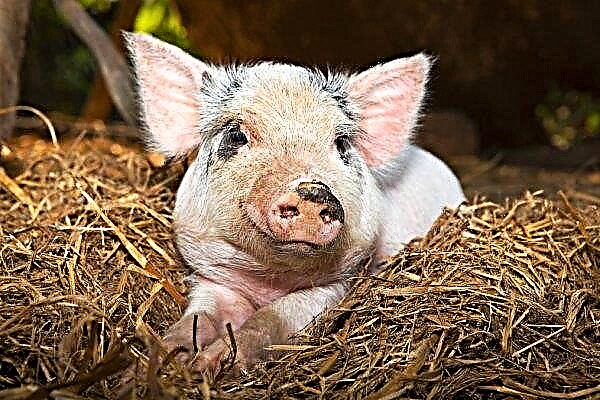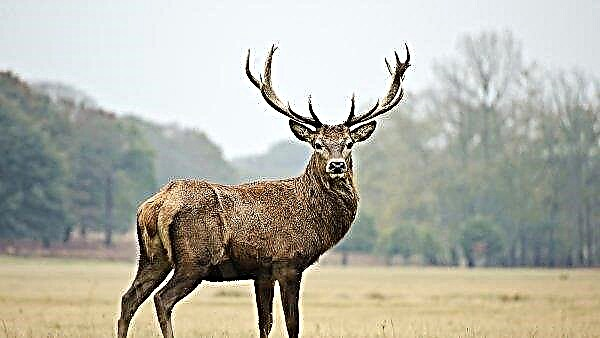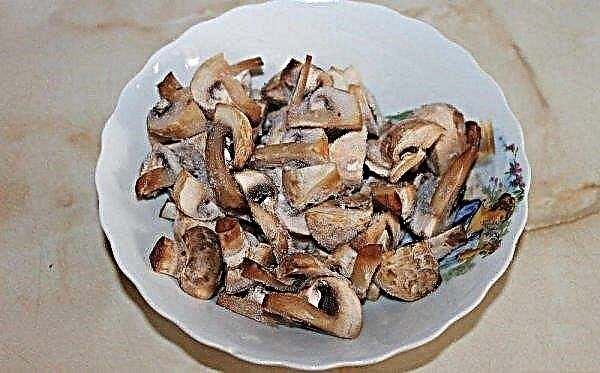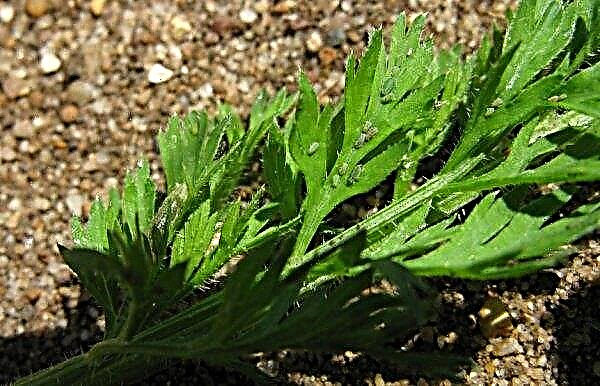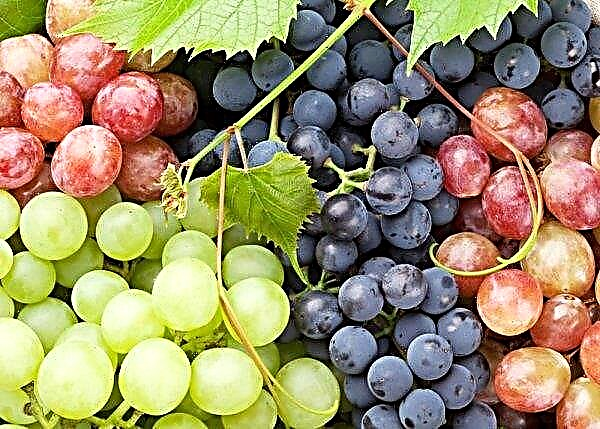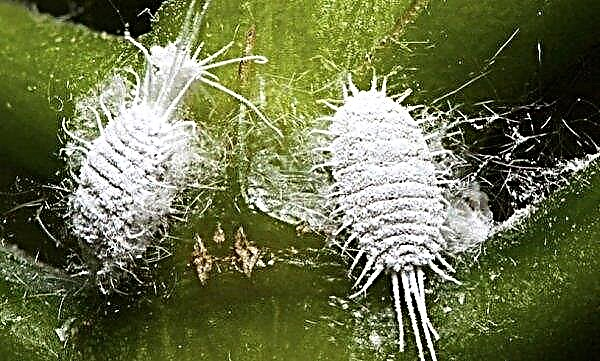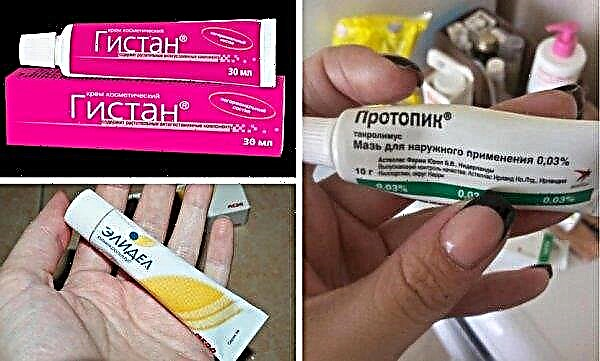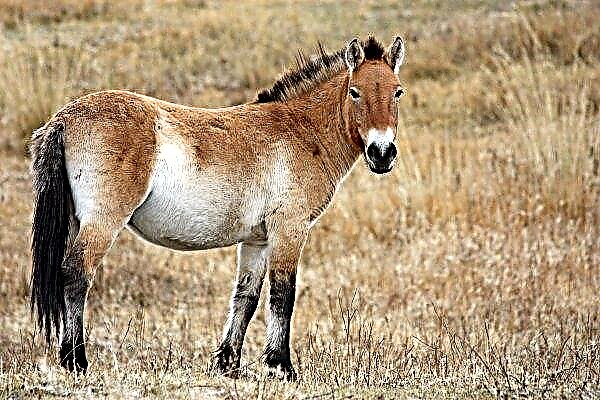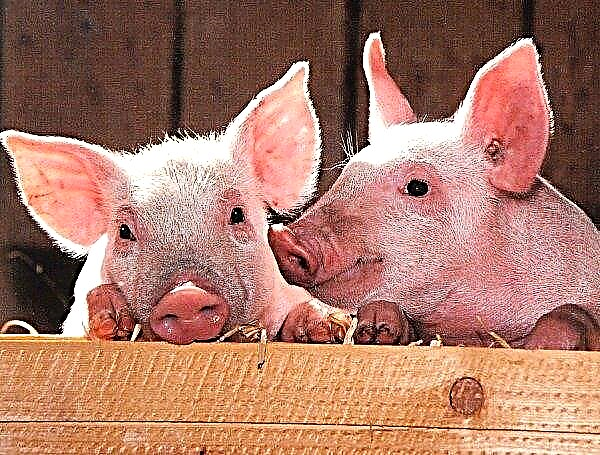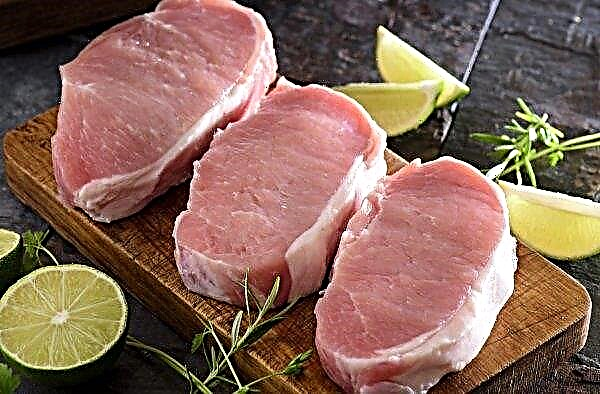New varieties of sweet pepper attract the attention of gardeners and gardeners with improved yields, disease resistance and commercial quality. Recently bred by Japanese breeders, the Ombrone F1 hybrid has such advantages that will not leave indifferent a lover of this wonderful vegetable.
Variety Description and Characterization
Compact powerful bushes give a high yield with an average ripening period. Fruits 3-4-chamber with a blunt tip, cuboid-elongated, saturated red, in the stage of technical ripeness - green. The serious sizes of peppers are striking: length 15–18 cm and weight 300–400 g, while the thickness of the fleshy wall is 6–8 mm. An excellent balanced sweet taste is pronounced in fresh salads, preserves and is preserved when the vegetable is frozen.
Ombrone is very flexible and suitable for both open ground and greenhouses. The hybrid is indeterminate and suitable for industrial cultivation. It has a high fruit set and stable fruiting.Did you know? Sweet pepper on the scale of hotness takes the last place — from 0 to 100 units. At the top of the charts is a variety of Carolina Reaper with an indicator of 2,200,000 units. You can even touch it only with gloves.
Advantages and disadvantages of the variety
- The benefits of Ombrone F1 pepper include:
- high productivity;
- plasticity and unpretentiousness;
- large fruit size;
- sweet taste without bitterness;
- good fruit setting at low temperatures;
- disease resistance;
- good storage and transportability.

Hybrid Growing Technique
Sweet pepper is sensitive to the amount of heat and light, therefore it is grown in seedlings, and beds and greenhouses are placed on the south side of buildings in the sun and protected from blowing areas.
Seed preparation
Pepper seeds retain their germination up to 3-4 years, but for sowing it is advisable to select seed from the last year's crop. For calibration, they are soaked in water or a 2-3% solution of sodium chloride and the largest and most full-fledged seeds sunk to the bottom are collected. For protection against diseases, etching is used in a weak solution of potassium permanganate, and to increase germination - soaking in a solution of trace elements or a growth stimulator.
Sowing pepper for seedlings is carried out 60–70 days before planting in the soil, usually this period falls on the end of February or the beginning of March.Important! The germination period of seeds can be reduced to 2–3 days, if you first withstand them between two layers of constantly moistened tissue at a temperature of +30°C for 6–8 ocloc'k.
Capacity selection
For sowing by the continuous method, shallow wooden or plastic containers with a depth of up to 15 cm are selected. With this method, it is necessary to dive seedlings, which for a long time slows down their growth and development. The use of a cassette method with cells of at least 5 cm or sowing in separate plastic cups with a volume of 150-200 ml is considered less traumatic, the fragile root system of the crop almost does not suffer during transshipment when transplanting seedlings to a permanent place and no time is spent on restoring the sprouts.
Soil requirements
Sweet pepper seedlings are prepared in the fall. The soil should be light, loose and nutritious, a mixture of turf land, humus and peat or sand with the addition of wood ash will work well. A few days before sowing, the substrate is transferred to a warm room for heating. It is advisable to carry out at least a simple treatment for disinfection by irrigation with a solution of potassium permanganate or fungicide, after which the soil is dried.
Did you know? According to the botanical description, the fruit of sweet pepper is not a vegetable, but a false hollow berry.
Seeding Technique
In the continuous method, the seeds are planted after 2-3 cm in a row to a depth of 1-1.5 cm with a row spacing of 15-20 cm. 1-2 seeds are planted in cups and cassettes. The surface of the containers is covered with a film until sprouts appear. Crops must be regularly ventilated and the soil surface moistened with warm settling water or spray water passed through the filter. At an optimum temperature of +26 ... + 28 ° С, the first leaves appear after a week, a lower temperature will delay the emergence of seedlings up to 3 weeks.

Features of sprout care
As soon as the shoots appear, the film is removed and the seedlings are transferred to a bright place with a temperature of +15 ... + 18 ° С, which in a week is set to + 25 ° С during the day and + 15 ° С at night. For normal development, seedlings need to provide daylight hours up to 12 hours. Use additional lighting should also be on cloudy days.
Watering is done once every 1-2 days as the soil surface dries with warm, settled water.
To ensure air access to the roots, excess water from the pallets needs to be drained and the soil loosened to a depth of about 3-5 cm. For the first time, seedlings are fed with a 1% solution of complex fertilizers after 2-3 true leaves appear, then every 10-14 days.Important! Water for irrigation should be warmed up to +28 ... + 30°C, the use of cold water will cause rot and death of immature shoots.
When sowing by the continuous method, 20-30 days after germination, dive by shortening the central root by 1-1.5 cm, then the bushes are planted in individual pots or cups. The level of penetration is the same as before, and the roots should not bend upward, and they must be handled very carefully because of their fragility. Sprouts from cassettes and individual cups do not dive, but are transplanted by transloading to larger containers.
A few days before the transplant, it is advisable to conduct 3-4 hardening to get used to the colder air. To do this, seedlings are taken out to a balcony or a veranda with an air temperature of +10 .. + 15 ° С, at first for 5 hours, then gradually increase the time to a day. 3 days before transplantation do top dressing.
Picked seedlings are ready for transplanting into the soil after 60–70 days, and grown by cassette method - after 50 days.
Planting seedlings in the ground
Pepper bushes are ready for planting in a permanent place when they have reached 15–20 cm in height, have 5–8 true leaves and no more than 1–2 buds.
The soil should warm up to +12 ... + 15 ° С, the air temperature will be set at +16 ... + 18 ° С, and the threat of frost will pass. For planting in greenhouses, this period begins in the second half of May, for open ground - in early June. In the southern regions with a warmer climate, a favorable time comes 2-3 weeks earlier.
Landing is preferably carried out in the evening, when direct sunlight will not fall on the leaves. The holes are formed at a distance of at least 40 cm from each other in rows or in a checkerboard pattern. The planting density for the Ombrone F1 hybrid is 4–5 plants per square meter. In each hole you can add a handful of humus or compost and half a handful of charcoal. The seedlings are buried together with a lump of earth no higher than the root neck, abundantly watered and mulched with peat.Important! It is necessary to ensure that the Ombrone F1 hybrid grows away from the burning varieties, since due to the strong tendency of the crop to pollinate, the sweet pepper fruits will be bitter.

Care Features
Sweet pepper is a very moisture-loving crop and needs weekly watering with warm, well-maintained tap water or collected rainwater. In hot weather and during fruiting period watered twice a week. Drying of the soil is poorly tolerated, foliage and buds begin to crumble, and the fruits grow small. An excess of moisture should also not be allowed, as the roots will not be able to "breathe" and receive oxygen.
2 weeks after planting on the beds, they begin to apply top dressing twice a month, alternating organic fertilizers with mineral fertilizers. The culture needs a sufficient amount of magnesium and potassium in the soil, and reacts to an excess of nitrogen with a decrease in flowering and does not tolerate fertilizers containing chlorine at all. As organics, manure diluted in water in a ratio of 1:10 or chicken droppings is used.
Did you know? Bell pepper contains more vitamin A than carrots, vitamin C - than citrus or black currants, and eating just one pod per day can halve the risk of stroke.
Hilling and loosening the soil
After each watering and feeding, the soil is mulched with hay, straw or sawdust. Loosening around the stem is done carefully so as not to damage the roots, to a depth of 5-7 cm. Aisles are loosened more deeply, while weeding the weeds. With the formation of roots on the lower part of the stem, bushes spud 2-3 times per season.
Plant bush formation
The powerful structure and constant growth of the hybrid bushes make it possible to form 2-3 stems from the upper stepsons on the plant, for which pinch the shoots above the second and third leaves. Further, the branches must be constantly pinched, pinch and remove fatliquoring and sterile processes, pick off the lower leaves that do not participate in the nutrition of the fruits. Sometimes the removal of the first flower is practiced to stimulate the growth of the bush. The branches must be tied to the supports, as they will break under the weight of a large number of growing pods. If the formation is carried out by the stem method, the trellises are installed in such a way that each order of branches is attached to a separate cross-member.

Resistance to diseases and insects
F1 hybrids are particularly resistant to major pepper diseases and pest attacks. Compliance with agricultural technology and proper care minimize the risk of crop diseases. For preventive purposes, you can treat the bushes with Bordeaux liquid once every two weeks. At the first signs of disease, plantings are treated with systemic fungicides, and diseased plants and their parts are cleaned and burned.
How to harvest and store crops
When growing Ombrone pepper for commercial purposes, the crop is harvested at the stage of technical maturity, when the fruits are green. Red pods matured to biological maturity contain more sugar, vitamins and minerals, but their ripening slows down the next growth of fruits.
Cut the peppers with the peduncle carefully so as not to damage the brittle stems. Damaged and rotten fruits are selected for processing. Harvested crops are put in boxes or baskets. When using film bags, the latter must have holes or perforations for air exchange. For storage use refrigerators or cellars with an air temperature of +8 .. + 10 ° С and a humidity of 80–90%. Fruits harvested at the stage of technical maturity can be stored for up to two months, and in the biological - up to a month. If you wrap the pods in paper, the shelf life is increased.
Sweet pepper is widely used in cooking, it is indispensable in many dishes and salads and serves as a wonderful multi-colored fragrant decoration of festive servings in carving.
Network user reviews
Pluses: great taste, productivity
Disadvantages: -
I’ll write a review about Ombron pepper. I have been cultivating sweet bell peppers for a long time, both in open and in protected ground. In central Russia, this is not to say that it’s very difficult, but not so simple as, for example, to grow a good carrot crop. Among other things, varieties intended for open ground are much inferior in taste to their southern counterparts. And to be honest, I like sweet peppers that you can eat fresh in various salads.
It is almost indifferent to stuffed peppers or just cooked. That is why the "Ombrone" bell pepper f1 has become a pleasant find.
Yes, I do not argue, in our area, to get a decent harvest, you need to grow it in a greenhouse. But it is worth noting that in comparison with other varieties for protected soil, it has an extremely high yield, and in a small greenhouse you can grow a good crop.
The fruits of this hybrid themselves are large, fleshy, cuboid in shape with a bright, elegantly red color. The taste for me was an amazing discovery, it is simply amazing, juicy, sweet and with a characteristic rich aroma. Ideal for fresh consumption. Therefore, I can say with confidence that I have never regretted the decision to grow Ombrone f1. And over time, perhaps I will transfer some of the other varieties in favor of this wonderful pepper.


